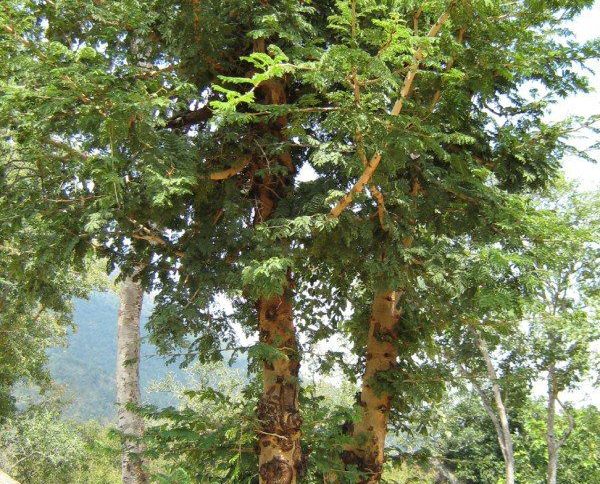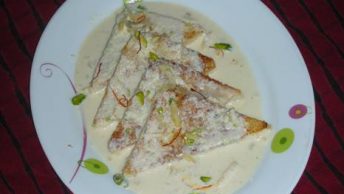SANKHAPHALA: (Sponge Tree)
Latin Name: Prosopis spicigera
Hindi: Sami, Shami, Jand, Khejra
Kannada: Jambi, Banni
Malayalam: Parampu
Marathi: Shemri
Punjabi: Jand
Sanskrit. Shami
Tamil: Perumbay
Telugu: Jammi
Family : Leguminosae
Prosopis in Greek means obscure. Spicigera is taken from Adrian von der Spigel, a physician of the sixteenth century. The
Sanskrit word Shami means pod.
The Vedas endowed the Shami tree with the property of containing fire. A Rigvedic legend says that Pururavas, the
ancestor of the Lunar race of kings, which included the Kurus and Pandavas, generated the primeval fire by rubbing the two
branches of the Shami and Ashvattha (Ficus Religiosa) trees together.
The Shami tree is held in reverence because Rama is supposed to have worshipped it before he set off with his army to
recover Sita. Among the Rajputs, the chief or king goes in a procession to worship the tree on the tenth day of Dashehra and
liberates a Jay, the sacred bird of Rama. In the Deccan, the Marathas shoot arrows at the Shami tree on the same day and put
the falling leaves into their turbans.
It is also considered one of the abodes of Shiva. One of Shiva’s names is Shamiroha or one who ascends the Shami tree.
The Pandavas lost everything to the Kauravas in a game of dice between Yudhisthira and Duryodhana. The latter promised that he would return their kingdom to the Pandavas if they stayed in the forest for twelve years and incognito for another year. If they were recognized during that last year they would have to repeat their exile.
After twelve years in the forest, the Pandavas came to the kingdom of Virata and decided to disguise themselves and live in the court of the king there. Before they assumed their disguises, they took off their weapons, given to them by various gods, and hung them on a Shami tree. They found a corpse close by and suspended it from the branches, saying “This is the body of our mother. It must remain here for a year, after which we shall take it down and burn it.” So, of course, no one dared to touch the weapons. When they returned a year later still unrecognized, they found them safe in the branches of the Shami tree. Before taking them down, they worshipped the tree to thank it for keeping their weapons safe. When the Pandavas won the battle of Kurukshetra, the worship of the Shami tree on Dashehra day became a custom that is followed to this day.
It is a medium-sized, evergreen tree with a thin crown. The trunk rarely has straight sections. The branches are covered with conical prickles.
Each leaf is divided into small dark leaflets. The five-petalled flowers are small and yellow. The pods are long, slender and contract at intervals. They are filled with a dry sweetish pulp and seeds. In Rajasthan, the Bishnois eat the bark of the tree during famines.
The Shami is helpful to pregnant women and can prevent miscarriage. It is used to treat a variety of other ailments such as asthma, bronchitis, dysentery, leucoderma, leprosy, muscle tremors and piles.
It is very valuable as a fodder tree. Being a legume, it adds nitrogen to the soil and increases its fertility.







